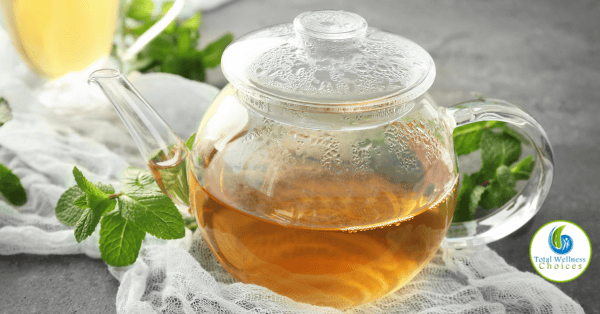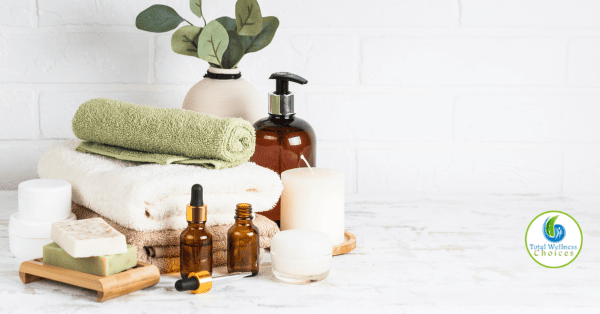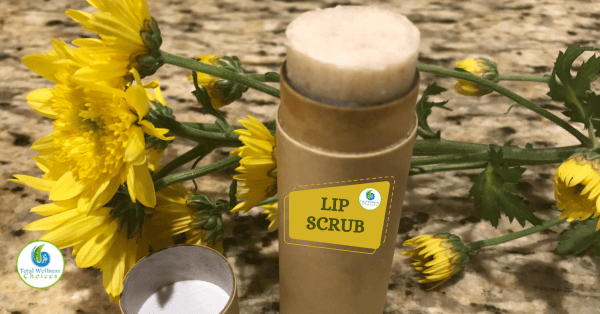DIY Nana’s Odor-Be-Gone Bathroom Spray

JJ’s Lavender infused Body Salve
April 19, 2021
DIY Dandelion Body Salve
May 29, 2021DIY Nana’s Odor-Be-Gone Bathroom Spray With All Natural Ingredients.
This easy to make spray is one you can use as a before-you-go-spray to help cut the odor! It is made with simple ingredients and without some of those dangerous chemicals that are in store bought sprays!
Here two different recipes and three essential oil blends that will help to cut bathroom odor!
These recipes take only a few minutes to make and will help rid your home of store bought chemical laden and artificially scented deodorizing sprays!
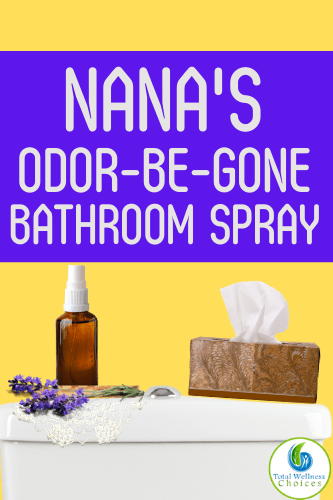
Base Formula Ingredients Used for Bathroom Spray
There are many different base formulas for room sprays. I have tried a few and the following two are my favorites. Some recipes I found didn’t make sense and some had combinations that are not recommended chemically. I like simple, basic formulas that work!
Recipe Using Everclear 190 Proof Ethanol Alcohol or 95%-99% Isopropyl Alcohol
The first formula uses Everclear alcohol. I was able to buy the 190 proof (which is 95% alcohol). Actually, I didn’t buy it. A dear family member volunteered!
Having grandchildren that come to visit I even hesitated to have such a potentially dangerous ingredient in my house.
But then I remembered that there are many other natural dangers lurking in my house – bleach for one, etc – those are stored away out of sight.
So my Everclear has been sent to join it’s friends in the locked poison closet. (No, I won’t be making any fancy alcohol mixers from my Everclear!).
On a positive note, having this ingredient has made it possible for me to make some cleaning sprays and room sprays that I know are less likely to be overrun with bacteria! It is a choice that everyone has to make for themselves.
If you cannot, or do not want to use Everclear alcohol you can substitute medical grade isopropyl (rubbing) alcohol (95% – 99%). It is best to use the higher percentage if you are trying to keep bacteria from growing in your product.
In the past I have used 71% and 91% isopropyl alcohol and have had no noticeable bacteria growth. (There was some separation of oils from the water which shaking before I used solved.)
To limit the chance of bacteria growing I make up small amounts when using formulas with less bacteria fighting ingredients. I make a 2 ounce spray instead of 4 ounce spray and make a new batch every two to three weeks.
A lot of factors add into limiting growth of bacteria. Using distilled water, making sure the container is clean before adding the ingredients, using clean techniques when making, and making a fresh batch every few weeks help to limit bacteria growth.
Another precaution is if you have smokers in your home – especially ones that might throw their cigarettes in the toilet – you might reconsider using alcohol as it is flammable!!
Recipe Using Witch Hazel
My second recipe is made with witch hazel. It is one that I have used with no bacteria growth even though it is more likely to be the one where it would occur.
To cut down on the possibility of my spray become a petri dish (and growing some yukky bacteria) I make a one or two ounce size spray and whip up a new batch every three to four weeks.
The alcohol based recipe disperses the essential oils better so if I forget to shake before using it doesn’t matter. With the witch hazel based recipe I have to shake to mix the ingredients each time before using.
Once more the choice is yours to make. Just use clean hands, clean utensils and containers and make both in as clean as possible environment.
Also, very important to note: Everclear 190 proof ethanol alcohol can burn (yes, your hands). Be careful when pouring – or wear nitrile or similar food preparation gloves to protect your hands. Wash off immediately if alcohol does get on your skin.
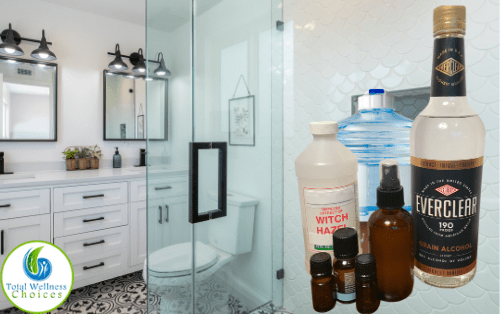
Nana’s Odor-Be-Gone Alcohol Base
This base uses the Everclear 190 proof, (95%) Ethanol Alcohol, or 95%-99% Isopropyl Alcohol. You can use the 71% or 91% Isopropyl Alcohol, but just note that it cannot be stored as long as the 95% due to chance of bacteria growth. I make a fresh batch every 3 to 4 weeks.
If you use the 95%-99% you can make a larger batch and it will last longer without bacteria growth. (I have used up to 8 weeks with no problem). I take out a little water as the essential oils replace it – that way this recipe is kept a bacteria fighting percentage!
- 1 fluid ounce Everclear 190 proof ethanol alcohol, or Medical Grade 99% Isopropyl Alcohol
- 3 fluid ounce minus 1/2 teaspoon distilled water
- 24 drops essential oils (or one of blends below)
Directions for Alcohol Based Recipe
- Combine Everclear 190 Proof Ethanol Alcohol, or 95%-99% Medical Grade Isopropyl Alcohol, with the essential oils in a 4 OZ spray bottle, and allow to sit for a full hour.
- Add the distilled water and gently mix.
- Ready to use! You may find separation of oil and alcohol and if this happens gently shake before each use.
Nana’s Odor-Be-Gone Witch Hazel Base
This base uses Witch Hazel as a base ingredient. It is the recipe I used before obtaining the Everclear and I found it to be very effective for me.
This is one I would not double unless you use it up quickly. This recipe is more likely to grow bacteria, especially in a warm, moist environment. Make a fresh batch every two to three weeks. It is easy to make!
- 1 fluid ounce Witch Hazel
- 1 fluid ounce distilled water
- 12 drops essential oils (or 1/2 of below blend of choice)
Directions for Making Witch Hazel Based Recipe
- Combine Witch Hazel with the essential oils in a 2 OZ spray bottle, and allow to sit for a full hour.
- Add the distilled water and shake well.
- Ready to use! Be sure and shake well before each use.
- Make a fresh batch every two to three weeks.
Essential Oils to Use in Bathroom Spray Recipes
The following essential oils are what I use for my bathroom sprays. They are suggestions only. You can make your own blend using these suggestions or use a single essential oil that you like best:
- Lavender EO
- Geranium (Egyptian) EO
- Jasmine EO
- Chamomile Roman EO
- Vanilla Botanical Extract
- Sweet Orange EO
- Mandarin EO
- Lime EO
- Lemon EO
- Bergamot EO
- Lemongrass EO
- Peppermint EO
- Tea Tree EO
- Amyris EO
Essential Oil Safety
Essential oils are natural, but that does not mean that they are safe for everyone.
Some people can be allergic to oils. Some have respiratory problems, or other health issues, where an essential oil may be contraindicated.
Some oils can’t be diffused around dogs, cats, birds, or other pets.
It’s not recommended that you spray around children under age 2. Some oils can be used carefully around children ages 2 to 10.
Be sure to check the recommended ages for each of the oils listed above, and in the blends below!
Also, check to make sure that the oils are safe for pregnant or nursing women if they will be using the bathroom.
Related Essential Oil Articles:
- 8 Essential Oil Dangers and Risks
- Essential Oils that are Safe for Kids
- Essential Oils to Use During Pregnancy
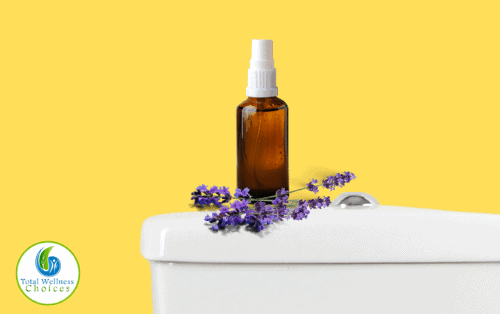
Nana’s Odor-Be-Gone Bathroom Spray Essential Oil Blend Recipes
Note: If you are going to use the Witch Hazel based recipe then you will use 1/2 amount each of listed essential oil in the blends!
#1 Citrus Blend
This is a bright tangy note type of blend. Perfect if you like citrus smells.
It has just the right amount of tanginess to cover those smells. It brings to mind the blossoming citrus fruit trees.
- 12 drops Lemon EO
- 8 drops Bergamot EO
- 4 drops Lime EO
#2 Sweet Summer Blend
This is a sweet note type of blend. Perfect if you like more of a sweet blossoming scent. It has just the right amount of a sweet flower scent to cover those unwanted smells.
- 12 drops Lavender EO
- 8 drops Bergamot EO
- 4 drops Vanilla Botanical Extract
#3 Woodsy Blend
This is a woodsy note type of blend. Perfect if you like the fresh earthy smells of a just rained woodland. It has just the right amount of a herbal earthy scent to cover those unwanted odors.
- 12 drops Lavender EO
- 6 drops Amyris EO
- 6 drops Chamomile Roman EO
I hope you find this recipe works for you. Let us know if you find this homemade deodorizing bathroom spray effective! Which of these essential oil blends is your favorite?
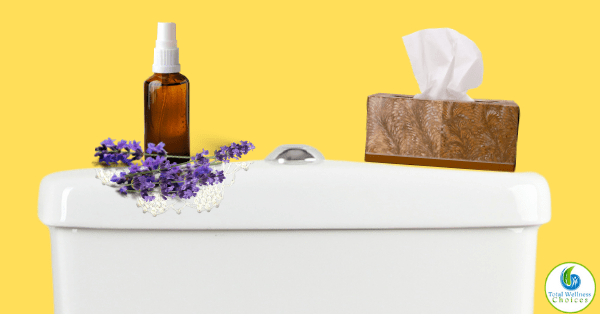
These statements have not been evaluated by the Food and Drug Administration. This article is for educational and informational purposes only and does not intend to diagnose or treat any disease. It is always recommended that you seek the advise of your private medical doctor.

